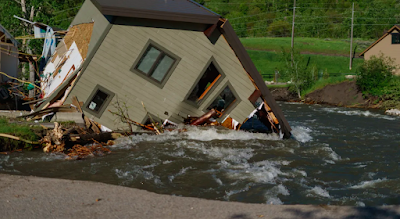 |
| Firefighters spray water around a giant Sequoia last weekas part of the efforts to fend off a wildfire that was threatening a grove of these ancient trees in Yosemite National Park |
Both are suffering serious damage, and tourists are being turned away due to separate climate related disasters. A fire is burning in Yosemite National Park in California. Yellowstone National Park is still picking up the pieces from extreme floods back in June. We''ll go to California first, then check out Yellowstone:
YOSEMITE SEQUOIAS THREATENED
A possible worst case scenario in Yosemite looks like it was avoided this past week. i The so-called Washburn fire is threatened the Mariposa Grove in Yosemite National Park. The grove is home to about 500 mature giant sequoias. These are some of the largest and oldest living things on Earth. A few of the trees in the Mariposa Grove are probably nearly 3,000 years old, which is mind-boggling to me.
Some of these Sequoias are over 260 feet tall and have a trunk circumference of 25 to 32 feet. So, they're the height of a good 18-story building. If a 72-passenger bus parked directly in front of one of these trees, it would just barely obscure the trunk of one of these trees.
Firefighters were pulling out all the stops to save these trees from damage.
The fire was stubborn, burning in steep terrain with lots of dead and downed fuels in the fire, said Nancy Phillipe, a Yosemite fire information spokeswoman quoted in the Washington Post. So this fire couldn't be contained easily, especially considering we're at the start of peak California fire season and no rain is in the forecast.
According to the Washington Post:
"Fire management staffers were working to preserve the trees by removing fuels around the sequoias ad using sprinkler systems to increase humidity around the trees, among other things, according to Phillipe. She told the Associated Press that first responders were using 'every tactic imaginable' to contain the blaze, including airdropping fire retardant."
Though it looks like the sequoias were spared this time, they remain in danger from future fires and climate change. Fires since 2020 have killed roughly 15 percent of all sequoias. So they're losing a war of attrition from fires, drought and climate change.
The fire itself was still burning and spreading at last report, and experts say it will be weeks before they can extinguish it.
YELLOWSTONE
Also, I'm sure you've seen news reports of the immense flooding in Yellowstone National Park back in June.
 |
| A house near Yellowstone National Park destroyed by massive June flooding. The park itself suffered extensive damage in the flood and it could take years to fully recover from the disaster. |
Amazingly no deaths were reported with the massive floods in and around Yellowstone in June just as the park was approaching its 150th anniversary.
Parts of the park are back open, and a fair number of tourists can visit large swaths of the area. But roads leading to and near the park were utterly destroyed, and countless trails within the park were also badly damaged.
It is estimated it will take years and a good $1 billion to get the park back in shape. Even then, it might not ever be back to the way it was.
According to the Associated Press:
"'This is not going to be an easy rebuild,' Superintendent Cam Sholly said ....as he highlighted photos of massive gaps of roadway in the steep canyon. 'I don't think it's going to be smart to invest potentially, you know, tens of millions of dollars, or however much it is, into repairing a road that may be subject to seeing a similar flooding event in the future.'"
Here's why they're worried about equally serious floods in the future. The Yellowstone flood might have been related to climate change, it's frankly hard to tell for sure until scientists do a review of what happened.
A cool, wet late spring built up a snowpack in the mountains. Then it abruptly turned hot, and then deep moisture from the Gulf of Mexico triggered torrential rains. The result was the huge flood.
Overall, though, climate change is increasing the chances and the magnitude of droughts and floods (Yellowstone was technically experiencing a drought when the deluge hit in June). With climate change, rainfall in the west is expected to become more and more unreliable. However, when it does rain, it's more likely to come in huge deluges instead of manageable showers.

No comments:
Post a Comment